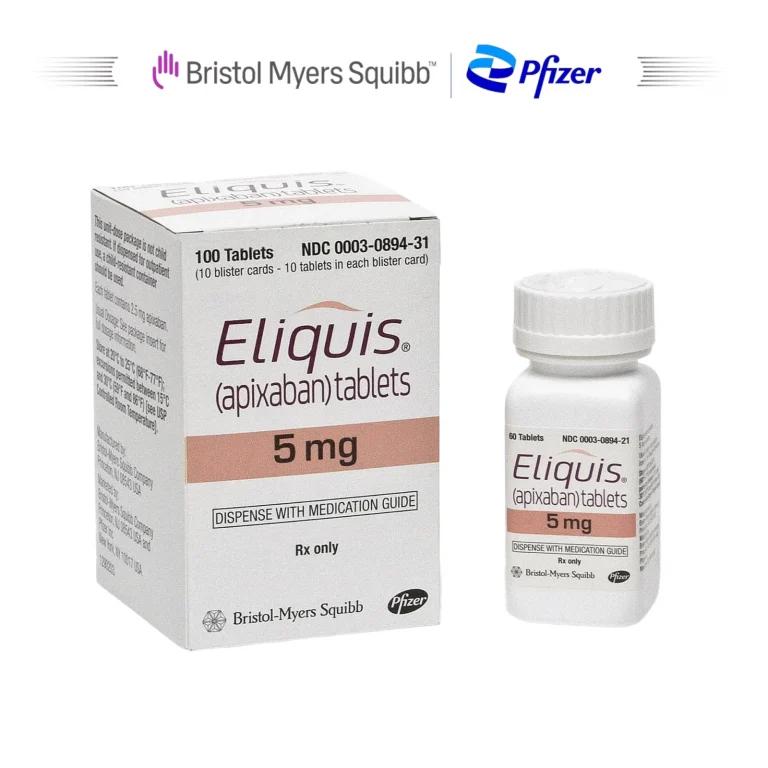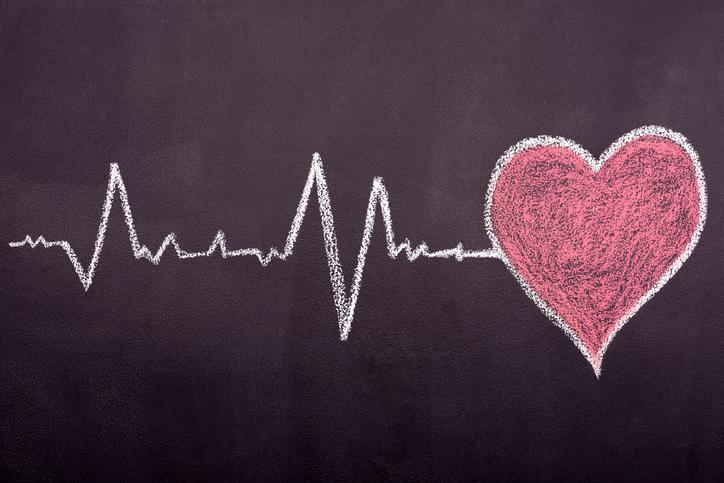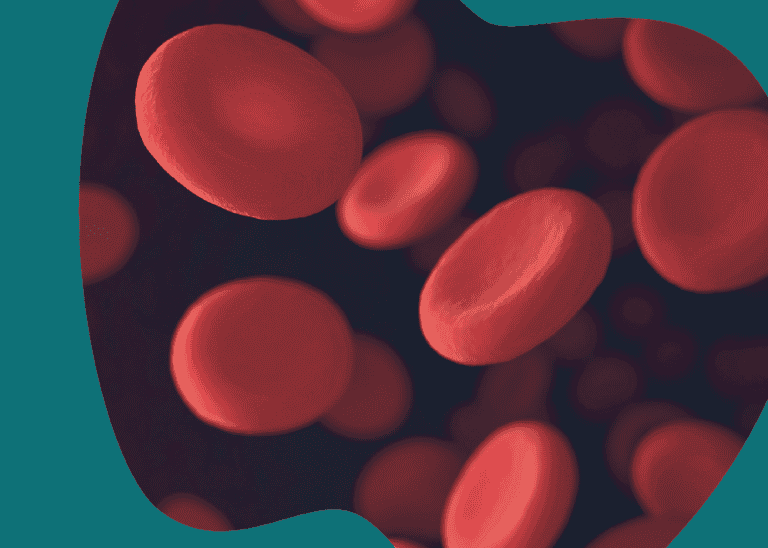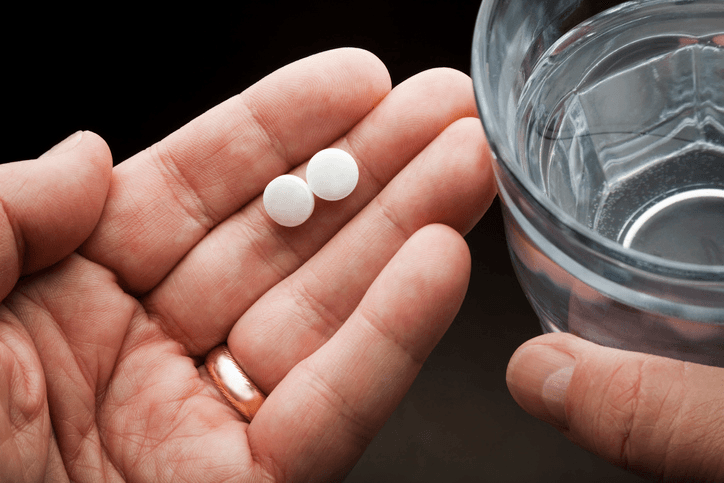Stroke
Get valuable insights into Stroke, including its causes, symptoms, prevention strategies, and treatment options, while also learning about how you can lower the cost of the medications used to treat Stroke.
MEDICAL INFORMATION
Stroke Key Facts
Related Medications
What are the different types of stroke?
There are generally three main types of stroke:
Ischemic stroke
This is the most common type of stroke, accounting for about 80% of all cases. Ischemic strokes occur when a blood clot or plaque buildup blocks or narrows an artery (this is called Atherosclerosis) which is involved in the blood supply to the brain. As a result, blood flow to a certain area of the brain is disrupted, leading to brain cell damage or death.
Hemorrhagic stroke
Hemorrhagic strokes occur when a blood vessel in a part of the brain ruptures or leaks, causing bleeding into the surrounding brain tissue. The two main types of hemorrhagic strokes are:
- Intracerebral hemorrhage: This type of stroke occurs when a blood vessel within the brain ruptures and bleeds into the surrounding brain tissue, damaging nearby cells
- Subarachnoid hemorrhage: Subarachnoid hemorrhage happens when there is bleeding in the space between the brain and the surrounding membranes (subarachnoid space). It is often caused by the rupture of a small, thin-walled brain artery called an aneurysm
Transient ischemic attack (TIA)
Also known as a “mini-stroke,” a TIA is a temporary disruption of blood flow to the brain. It produces stroke-like symptoms that typically resolve within a short period, usually within 24 hours. TIAs are important warning signs as they indicate an increased risk of a more severe stroke in the future.
What are the causes of stroke?
Strokes can be caused by various factors, and several risk factors increase the likelihood of having a stroke. Below we list the common causes associated with strokes
Ischemic Stroke
The main cause of ischemic stroke is the blockage or narrowing of blood vessels supplying the brain. This can occur due to:
- thrombosis: formation of a blood clot (thrombus) in a blood vessel within the brain or leading to the brain
- embolism: a blood clot or debris that forms elsewhere in the body and travels to the brain, blocking a blood vessel
Hemorrhagic Stroke
Hemorrhagic strokes are caused by bleeding in the brain, typically due to
- hypertension: chronic high blood pressure can weaken blood vessel walls, leading to rupture and bleeding
- aneurysm: abnormal bulging or ballooning of a blood vessel, which can rupture and cause bleeding
- arteriovenous malformation (AVM): A congenital condition where tangled, abnormal blood vessels are present, increasing the risk of bleeding
What are the risk factors of stroke?
High blood pressure (hypertension)
The most significant risk factor for stroke is having uncontrolled high blood pressure.
Smoking
Cigarette smoking increases the risk of stroke due to the damaging effects of tobacco on blood vessels.
Diabetes
Individuals with diabetes have an increased risk of stroke due to the associated health conditions such as high blood pressure, high blood sugar levels, and high cholesterol.
High cholesterol
High levels of LDL (bad) cholesterol and low levels of HDL (good) cholesterol can contribute to plaque buildup in blood vessels, increasing the risk of stroke.
Obesity and unhealthy lifestyle
Being overweight or obese, having a sedentary lifestyle, poor diet, excessive alcohol consumption, and drug abuse can increase the risk of stroke.
Age and gender
The risk of stroke increases with age, and men tend to have a higher risk of stroke compared to premenopausal women. However, the risk evens out in older age.
Family history and genetics
A family history of stroke or certain genetic conditions can increase the risk.
Previous history of stroke or TIA
Having a prior stroke or transient ischemic attack (TIA) increases the risk of subsequent strokes.
Cardiovascular diseases
Conditions like coronary artery disease, heart disease, atrial fibrillation (irregular heart rhythm), heart failure, and certain heart defects can raise the risk of stroke.
Race and ethnicity
Some ethnic groups, such as African Americans, Hispanics, and Asian/Pacific Islanders, have a higher risk of stroke.
It’s important to note that while these factors increase the risk of stroke, they do not guarantee that a stroke will occur. Adopting a healthy lifestyle, managing underlying health conditions, and following medical advice can help reduce the risk of stroke. Regular check-ups, blood pressure monitoring, cholesterol management, and smoking cessation are also crucial for stroke prevention.
A large study observed that heart complications following ischemic stroke are very common. This “stroke-heart syndrome” may put survivors of a stroke at higher risk of a heart attack or another stroke within five years.
What are the signs and symptoms of stroke?
Recognizing the signs and symptoms of a stroke is crucial for prompt medical intervention, as time is of the essence in treating this medical emergency. Common signs and symptoms of a stroke include
Sudden numbness or weakness
You may experience sudden numbness, weakness, or paralysis in your face, arm, or leg, typically on one side of the body. Pay attention to drooping or unevenness in the face, or difficulty with arm or leg coordination.
Trouble speaking or understanding
You may have difficulty speaking clearly or understanding others. This can manifest as slurred speech, garbled words, or difficulty finding the right words to express yourself.
Confusion or trouble with comprehension
Stroke can cause confusion, disorientation, or difficulty understanding simple instructions or conversations.
Vision problems
Sudden vision loss or blurred/double vision in one or both eyes can occur. This can be accompanied by difficulty perceiving shapes, colors, or objects.
Severe headache
A sudden, severe headache with no apparent cause can be a warning sign of a stroke, especially if it is accompanied by other stroke symptoms.
Dizziness and loss of balance
You may experience sudden dizziness, loss of balance, or coordination difficulties. This can result in trouble walking or a feeling of unsteadiness.
Remember the acronym FAST to recognize stroke symptoms
- Face: Look for facial drooping or asymmetry. Ask the person to smile and check if their smile appears uneven
- Arms: Check for arm weakness or numbness. Ask the person to raise both arms and see if one arm drifts downward or cannot be held up
- Speech: Listen for slurred or garbled speech. Ask the person to repeat a simple phrase and see if they have difficulty speaking clearly
- Time: If you observe any of these signs, it’s essential to call emergency services immediately. Time is critical for stroke treatment
It’s important to note that not all strokes present with the same symptoms, and some individuals may experience atypical or less common signs. If you suspect a stroke, do not delay seeking medical help, even if the symptoms are temporary or seem to resolve. Quick intervention can help minimize brain damage and improve outcomes.
How is stroke diagnosed?
The diagnosis of a stroke typically involves a combination of medical assessments, imaging tests, and a review of the individual’s medical history. The primary goals are to confirm the occurrence of a stroke, determine its type (ischemic or hemorrhagic), identify the affected area of the brain, and assess the potential causes. Here are the common diagnostic procedures used
Physical examination
A healthcare professional will perform a physical examination to assess neurological signs and symptoms. They will check for weakness, numbness, coordination problems, speech difficulties, and other stroke-related indicators.
Medical history review
Gathering information about the individual’s medical history, including any previous strokes, transient ischemic attacks (TIAs), risk factors, and existing health conditions, helps in the diagnostic process.
Imaging tests
- CT scan (Computerized Tomography): This imaging test provides detailed images of the brain and can help determine if the stroke is due to bleeding or a clot. It helps in ruling out other conditions that may mimic stroke symptoms
- MRI (Magnetic Resonance Imaging): MRI uses magnetic fields and radio waves to produce detailed images of the brain. It can provide more precise information about the location, extent, and type of stroke, helping in treatment decisions
Blood tests
Blood tests may be conducted to evaluate blood sugar levels, cholesterol levels, clotting factors, and to check for infections or other conditions that may contribute to the stroke.
Angiography
This procedure involves injecting a contrast dye into blood vessels, usually through catheterization, to visualize the blood vessels and identify any abnormalities or blockages.
Echocardiogram
An echocardiogram is an ultrasound of the heart that can help identify potential sources of blood clots, such as a blood clot originating from the heart that traveled to the brain (embolism).
What is are the treatment and rehabilitation options for stroke?
The treatment and rehabilitation options for stroke depend on several factors, including the type of stroke, its severity, and the individual’s overall health. The primary goals of stroke treatment are to restore blood flow to the affected area of the brain, prevent further damage, and support recovery. Here are some common approaches
Acute treatment
- Ischemic Stroke: If the stroke is caused by a blood clot, immediate treatment may involve administering medication called tissue plasminogen activator (tPA) to dissolve the clot and restore blood flow. Another procedure called mechanical thrombectomy may be performed to physically remove the clot
- Hemorrhagic Stroke: In the case of a bleeding stroke, the focus is on controlling bleeding and reducing pressure on the brain. Treatment may involve medication, surgery, or endovascular procedures to repair damaged blood vessels or stop the bleeding
Medications
Various medications may be prescribed to manage and prevent complications associated with stroke, such as
- Anticoagulants or antiplatelet agents: These help prevent blood clots and reduce the risk of another stroke
- Blood pressure-lowering medications: These are used to control hypertension and reduce the strain on blood vessels
- Cholesterol-lowering medications: These help manage high cholesterol levels
- Medications to prevent seizures or reduce brain swelling: These may be prescribed if necessary
Rehabilitation
- Physical therapy: Physical therapy focuses on improving strength, balance, mobility, and coordination. It may involve exercises, gait training, and assistive devices
- Occupational therapy: Occupational therapy helps individuals regain the ability to perform daily activities like dressing, eating, and bathing. It focuses on improving fine motor skills and functional independence
- Speech therapy: Speech therapy addresses difficulties with speech, language, swallowing, and cognitive skills
- Psychological and emotional support: Emotional support, counseling, and psychological interventions may be provided to help individuals cope with the emotional and psychological impact of stroke
Lifestyle modifications
Adopting healthy lifestyle habits can aid in stroke recovery and prevent future strokes. This may include
- Dietary changes: Following a balanced diet low in saturated fats, cholesterol, and sodium while emphasizing fruits, vegetables, whole grains, and lean proteins
- Physical activity: Engaging in regular physical activity as recommended by healthcare professionals
- Smoking cessation: Quitting smoking and avoiding secondhand smoke
- Managing underlying health conditions: Effectively managing conditions like high blood pressure, diabetes, and high cholesterol through medication, lifestyle changes, and regular medical care
Stroke treatment and rehabilitation are often multidisciplinary, involving a team of healthcare professionals, including doctors, nurses, therapists, and psychologists. The specific treatment plan will be tailored to the individual’s needs and may evolve over time as recovery progresses. It’s important to start rehabilitation as soon as possible after a stroke to maximize the chances of recovery and regain functional abilities.
What medications are used in the management of stroke?
Antiplatelet Agents
- Aspirin
- Clopidogrel (Plavix)
- Dipyridamole (Persantine)
- Ticagrelor (Brilinta)
- Prasugrel (Effient)
Anticoagulants (blood thinners)
- Warfarin (Coumadin)
- Apixaban (Eliquis)
- dabigatran etexilate (Pradaxa)
- Rivaroxaban (Xarelto)
- Edoxaban (Savaysa)
Thrombolytics (Clot-busting drugs)
- Alteplase (tPA)
- Reteplase (Retavase)
- Tenecteplase (TNKase)
Statins
- Atorvastatin (Lipitor)
- Simvastatin (Zocor)
- Rosuvastatin (Crestor)
- Pravastatin (Pravachol)
Antihypertensive Medications
- Angiotensin-converting enzyme (ACE) inhibitors
- Angiotensin receptor blockers (ARBs)
- Calcium channel blockers
- Beta-blockers
- Diuretics
How can I prevent stroke?
Preventing a stroke involves adopting a healthy lifestyle and managing underlying health conditions that contribute to stroke risk. Here are some key strategies for stroke prevention:
Manage blood pressure
High blood pressure is a significant risk factor for stroke. Monitor your blood pressure regularly and work with your healthcare provider to keep it within a healthy range. This may involve lifestyle modifications, such as reducing sodium intake, exercising regularly, and taking prescribed medications as directed.
Control diabetes
If you have diabetes, it’s essential to manage your blood sugar levels through proper diet, regular physical activity, and medications as prescribed by your healthcare provider. Keeping diabetes under control helps reduce the risk of stroke.
Maintain a healthy weight
Excess weight, particularly around the waistline, is associated with an increased risk of stroke. Focus on maintaining a healthy body weight through a balanced diet and regular physical activity.
Eat a nutritious diet
Follow a diet that emphasizes fruits, vegetables, whole grains, lean proteins, and healthy fats while limiting saturated and trans fats, cholesterol, and sodium. This can help manage blood pressure, cholesterol levels, and overall cardiovascular health.
Exercise regularly
Engage in regular physical activity to promote cardiovascular health. Aim for at least 150 minutes of moderate-intensity aerobic exercise or 75 minutes of vigorous-intensity aerobic exercise each week, along with strength training exercises.
Quit smoking
Smoking significantly increases the risk of stroke and other cardiovascular diseases. Quitting smoking is one of the most important steps you can take to reduce your stroke risk. Seek support from healthcare professionals, use smoking cessation aids, or join smoking cessation programs to increase your chances of success.
Limit alcohol consumption
Excessive alcohol intake can raise blood pressure and increase the risk of stroke. If you choose to drink, do so in moderation, which means up to one drink per day for women and up to two drinks per day for men.
Manage cholesterol levels
High cholesterol contributes to plaque buildup in the arteries, increasing the risk of stroke. Adopt a heart-healthy diet, exercise regularly, and follow prescribed medications if needed to control cholesterol levels.
Treat atrial fibrillation (AFib)
If you have atrial fibrillation, a heart rhythm disorder, work with your healthcare provider to manage it effectively. AFib increases the risk of blood clots, which can lead to stroke. Medications or procedures may be recommended to reduce the risk of clot formation.
Be aware of family history
Some stroke risk factors, such as genetic predispositions, cannot be modified. However, being aware of your family history of stroke can help you and your healthcare provider take necessary precautions and manage other modifiable risk factors more effectively.
Stroke prevention is a lifelong commitment, and it’s important to work closely with your healthcare provider to assess your individual risk factors and develop a personalized prevention plan. Regular check-ups, screenings, and adherence to medical advice are crucial for stroke prevention and overall well-being.
What stroke support organisations are there available to support me in the UK?
- Stroke Association: The Stroke Association is the leading charity in the UK dedicated to supporting stroke survivors and their families. They provide various services, including information resources, support groups, life after stroke services, and a helpline
- Different Strokes: Different Strokes is a charity specifically focused on supporting young stroke survivors and their families. They offer services such as exercise groups, social events, and an online forum
- UK Stroke Forum: The UK Stroke Forum is a coalition of organizations and individuals working to improve stroke care in the UK. They organize an annual conference and provide resources and information for healthcare professionals, stroke survivors, and their families
- Age UK: Age UK is a national charity that provides support and services for older people, including those who have had a stroke. They offer information, advice, and local services that can assist with recovery and daily living
- Headway – the brain injury association: While primarily focused on brain injury, Headway also provides support and resources for individuals who have experienced strokes. They have local groups, a helpline, and information services to help stroke survivors and their families
- Carers UK: Carers UK is a national charity that supports individuals who are caring for someone after a stroke. They offer information, advice, and support for caregivers, helping them navigate the challenges they may face
What stroke support organisations are there available to support me in the US?
- American Stroke Association (ASA): The ASA is a division of the American Heart Association and is dedicated to providing resources, education, and support to stroke survivors, caregivers, and healthcare professionals. They offer information on prevention, treatment, recovery, and rehabilitation
- National Stroke Association (NSA): The NSA is a non-profit organization that focuses on providing support and resources for stroke survivors and their families. They offer educational materials, support groups, an online community, and a helpline
- United Stroke Alliance: The United Stroke Alliance aims to improve the quality of life for stroke survivors and their families through education, support, and advocacy. They offer programs and services such as support groups, educational workshops, and recreational activities
- National Aphasia Association (NAA): While not specifically focused on stroke, the NAA provides support and resources for individuals with aphasia, a common condition following stroke. They offer information, advocacy, support groups, and communication tools for people with aphasia and their families
- American Heart Association (AHA): The AHA is a national organization that focuses on heart health, but they also provide resources and information on stroke prevention and recovery. They offer educational materials, support groups, and information on lifestyle changes to reduce the risk of stroke
- Brain Injury Association of America (BIAA): While primarily focused on brain injury, the BIAA can provide resources and support for individuals who have experienced strokes. They offer information, advocacy, support groups, and educational materials for stroke survivors and their families
Summary
Stroke is a serious medical condition that requires immediate attention and intervention. Understanding the causes, recognizing the symptoms, and adopting preventive measures are essential for reducing the risk of stroke
Medical Disclaimer
NowPatient has taken all reasonable steps to ensure that all material is factually accurate, complete, and current. However, the knowledge and experience of a qualified healthcare professional should always be sought after instead of using the information on this page. Before taking any drug, you should always speak to your doctor or another qualified healthcare provider.
The information provided here about medications is subject to change and is not meant to include all uses, precautions, warnings, directions, drug interactions, allergic reactions, or negative effects. The absence of warnings or other information for a particular medication does not imply that the medication or medication combination is appropriate for all patients or for all possible purposes.







